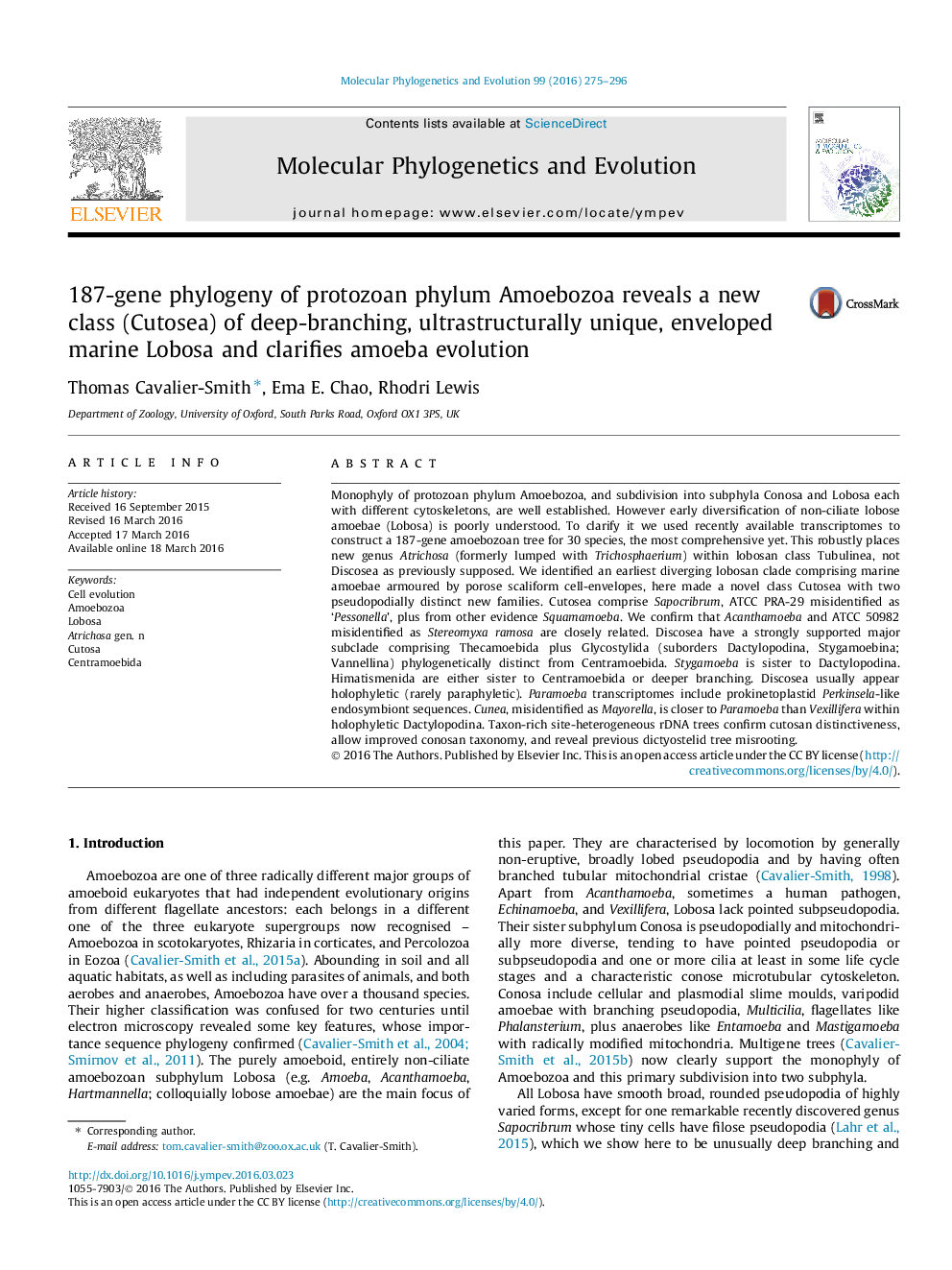| کد مقاله | کد نشریه | سال انتشار | مقاله انگلیسی | نسخه تمام متن |
|---|---|---|---|---|
| 5918534 | 1570798 | 2016 | 22 صفحه PDF | دانلود رایگان |

- Ultrastructurally unique new amoebozoan class Cutosea are the most divergent Lobosa.
- Multinucleate thecate Trichosida are odd Tubulinea not Discosea as previously thought.
- Revised order Glycostylida (Vannellina, Dactylopodina, Stygamoeba) is a robust clade.
- Stenamoeba (Thecamoebida) is sister to Glycostylida; Himatismenida are more distant.
- Paramoeba coevolved with its prokinetoplastid symbiont and is sister to vexilliferids.
Monophyly of protozoan phylum Amoebozoa, and subdivision into subphyla Conosa and Lobosa each with different cytoskeletons, are well established. However early diversification of non-ciliate lobose amoebae (Lobosa) is poorly understood. To clarify it we used recently available transcriptomes to construct a 187-gene amoebozoan tree for 30 species, the most comprehensive yet. This robustly places new genus Atrichosa (formerly lumped with Trichosphaerium) within lobosan class Tubulinea, not Discosea as previously supposed. We identified an earliest diverging lobosan clade comprising marine amoebae armoured by porose scaliform cell-envelopes, here made a novel class Cutosea with two pseudopodially distinct new families. Cutosea comprise Sapocribrum, ATCC PRA-29 misidentified as 'Pessonella', plus from other evidence Squamamoeba. We confirm that Acanthamoeba and ATCC 50982 misidentified as Stereomyxa ramosa are closely related. Discosea have a strongly supported major subclade comprising Thecamoebida plus Glycostylida (suborders Dactylopodina, Stygamoebina; Vannellina) phylogenetically distinct from Centramoebida. Stygamoeba is sister to Dactylopodina. Himatismenida are either sister to Centramoebida or deeper branching. Discosea usually appear holophyletic (rarely paraphyletic). Paramoeba transcriptomes include prokinetoplastid Perkinsela-like endosymbiont sequences. Cunea, misidentified as Mayorella, is closer to Paramoeba than Vexillifera within holophyletic Dactylopodina. Taxon-rich site-heterogeneous rDNA trees confirm cutosan distinctiveness, allow improved conosan taxonomy, and reveal previous dictyostelid tree misrooting.
181
Journal: Molecular Phylogenetics and Evolution - Volume 99, June 2016, Pages 275-296